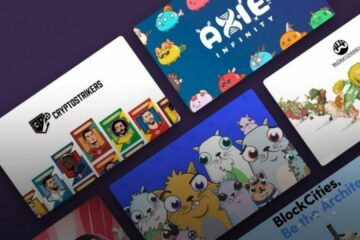Non-fungible tokens (NFT) are digital representations of unique, individual items. They exist in the same kind of format as cryptocurrency and can be used for a variety of purposes. The term “non-fungible” refers to the fact that each token is one-of-a-kind–that is, they can’t be broken down into smaller units. They’re like collectibles, but with digital rarity and ownership information encoded on the blockchain. As more companies explore ways to use NFTs in their products or services, this article will provide an overview of how these tokens work and explore some possible applications for them in different industries.
What are NFTs (Non-Fungible Tokens)?
NFTs can be considered the digital equivalent of your favorite sneakers. They’re an easy way for gamers and investors alike to invest in unique assets that cannot be copied or emulated by another person without permission from their respective owner(s). Think about it this way: If I own CryptoKitties, then nobody else on earth will have a game console where we both agree upon rules together resulting in our owning one item apiece just like how there might exist only one instance – so far! This article should help you understand more if any potential newcomer who hasn’t had much exposure yet regarding blockchain technology before.
NFTs are not entirely new, however. In fact, they’re fairly common in gaming circles. For example, you can purchase a unique sword in Diablo III that may have better stats than another one you find elsewhere in the game world. That particular sword cannot be sold to other players for any price, since it only belongs to you. It’s also important to note that each item within Diablo III is owned by a single player at all times–they are not shared across the entire network of gamers who play Diablo III.
What makes NFT special?
The thing that sets NFTs apart from non-fungible assets you might find in other games is that NFTs are both individualized and designed to be traded freely between different players. This allows the items you collect to grow in value as they become more scarce (and valuable) over time. NFTs can also contain metadata describing their traits, such as whether it’s a sword, shield or helmet.
NFTs allow for gamers and investors alike to invest in unique assets that cannot be copied or emulated by another person without permission from their respective owner(s).
Since they’re based upon shared ledgers known as blockchains , every instance of an NFT has its own digital “DNA” that can’t be changed or altered at any point after it comes into existence. If the blockchain authorizing the creation of that particular NFT is ever compromised or hacked, the damage would be limited to that one instance of the token. So unlike other digital assets, you can be sure that your NFTs are safe and secure–provided the blockchain on which they’re based remains functional and secure.
Applications for NFT in Different Industries
NFTs have a wide range of potential applications in different industries. Some of the most likely candidates include:
Gaming:
As mentioned earlier, gaming is one area where NFTs are already in use. In addition to providing unique items for players to collect and trade, they can also be used to create entire game worlds that exist on the blockchain. This allows for a level of ownership and security that isn’t possible with traditional game worlds.
2. Art:
Just like gaming, art is another industry where NFTs can be used to create unique, one-of-a-kind pieces. In addition, NFTs can also be used to auction off pieces of art or to provide a secure way for artists to sell their work online.
3. Music:
Musicians can use NFTs to create and sell digital copies of their songs online. In addition, they can also use them to create new forms of music that wouldn’t be possible without the use of blockchain technology.
4. Memes:
Memes are another type of digital asset that can benefit from the use of NFTs. By using NFTs, memes can be stored in a secure and tamper-proof way, ensuring that they can’t be modified or changed without the consent of the owner. This could help to prevent memes from being stolen or used without permission.
5. Charities:
Charities can use NFTs to create and sell digital copies of their donation receipts online. In addition, they can also use them to create new types of charitable donations that wouldn’t be possible without blockchain technology.
Creating Your Own NFT
Now that you have a better understanding of what NFTs are and some of their potential applications, let’s walk through how you can create your own NFT.
The first thing we’ll need to do is select a blockchain on which we want to create our NFT. There are various ways you can go about doing this, and in some cases, you might even be able share the cost with other people who want to create their own NFTs.
This will allow us to make sure that the NFT has access to all of the features it needs. For example, if our game world is based upon an ERC-721 token, then any items created using Moralis will automatically have access to all of the same benefits as ERC-721 tokens.
We’ll also need to decide what type of item our NFT represents. This could be anything from a weapon to a piece of clothing.
Once we’ve selected our blockchain and determined the type of item our NFT represents, we’ll need to create a new account on that blockchain. This account will be used to store the information for our NFT.
Now it’s time to actually create our NFT. We’ll do this by issuing a command to the blockchain that tells it to create a new instance of our chosen token.
Finally, we’ll need to set some basic properties for our token, such as its name and description.
Once we’ve completed these steps, we’ll have our very own NFT that can be used in any way we see fit!



0 Comments